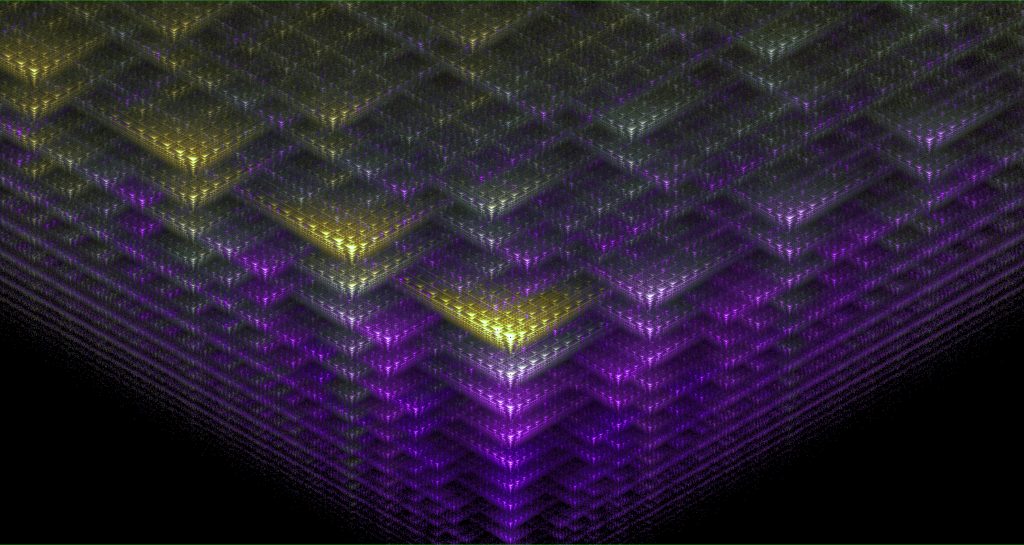Dr Jianmei Lu | Dr Quan Li – Shedding New Light on Smart Organic Materials
Organic materials that can emit light in response to certain stimuli hold great promise for numerous real-world applications. So far, however, their diminished performance on exposure to water has presented numerous challenges. In their research, Dr Jianmei Lu at Soochow University and Dr Quan Li at Southeast University present a new series of compounds that instead display improved light emission when they are transformed into ‘hydrated’ crystals. By assessing the mechanisms responsible for this unique behaviour, the researchers now present new routes towards the widespread use of smart organic materials.
Unique Properties of Water
It’s no coincidence that water is such a component of all life on Earth. Consisting of one oxygen atom and two hydrogen atoms, water molecules are ideally suited to forming strong bonds between each other and with other molecules.
Specifically, this property arises because oxygen atoms are ‘electronegative’. This means that when they are bonded to hydrogen atoms within a water molecule, they tend to attract the shared electrons towards them, giving them a slight negative charge, while the hydrogen atoms become slightly positively charged. In addition, water molecules are bent at a certain angle, with two positively-charged hydrogen atoms flanking a central, negatively-charged oxygen atom.
This distinct ‘polar’ structure allows strong intermolecular bonds to form between the positive or negative part of a water molecule, and the negative or positive part of a nearby molecule. In nature, these so-called ‘hydrogen bonds’ are widely found between water molecules and inorganic compounds, organic molecules, and large biomolecules such as proteins and enzymes.
Hydrogen bonds can play particularly vital roles in the function of living organisms, including the removal of harmful substances from the vicinity of enzymes that repair strands of damaged DNA. In addition, they can help clinicians to predict the performance of new drug designs – potentially leading to important medical advances. Altogether, hydrogen bonding is one of the most important types of interaction that takes place between molecules, and underlies the physical characteristics of many different substances and systems.

Limited Advantages for Advanced Materials
For materials scientists, the unique characteristics of hydrogen bonds have enabled cutting-edge designs of a diverse range of smart materials – including polymers that can repair themselves when damaged; materials that mimic the function of our muscles by expanding and contracting; and luminescent materials, which emit light. Yet despite its numerous advantages, the influence of hydrogen bonding on the performance of artificial materials isn’t always beneficial.
Among the technologies whose performance can be damaged by these bonds include perovskite solar cells and organic LEDs. Perovskite materials feature unique crystal structures that can efficiently convert sunlight into electricity, while organic LEDs are made from carbon-based materials that emit light when an electric current passes through them.
When these materials interact with water, hydrogen bonds can destroy the intricate crystal structures responsible for their advanced properties, diminishing their performance over time. The effect is particularly inconvenient for devices operating under Earth’s atmosphere, as they are regularly exposed to water in the form of rain, sea spray, and tiny droplets of mist or fog. To overcome this challenge, researchers need to harness phenomena in both chemistry and physics that have remained largely unexplored so far.
Inhibited Performances in Smart Organic Materials
Among the materials most severely affected by this problem are smart, or ‘stimuli-responsive’ organic materials. In normal circumstances, without exposure to water, the properties of these substances can be controlled by many different factors in their surrounding environments, including temperatures, electrical currents, mechanical forces, magnetic fields, and chemical concentrations. In particular, a class of compounds named ‘organic photoluminescent’ materials have been shown to display particularly strong responses to surrounding stimuli.
Typically, as photoluminescent materials absorb photons of light with specific wavelengths, the electrons of their constituent atoms are excited to higher energy levels. After a certain delay – which can range from just fractions of a nanosecond to several milliseconds, they will then move back to their lowest-energy ‘ground’ states. In the process, they will emit photons with the exact same wavelengths as the light that first illuminated them.
By detecting this luminescence, researchers can then use these materials to sensitively probe their surroundings. As a result, they are ideally suited for use as highly accurate detectors, which can be used without the need for intricate or expensive equipment. Unfortunately, however, their photoluminescence properties immediately deteriorate on exposure to water, preventing the widespread use of smart organic materials.

New Organic Hydrates
In a recent study, Dr Jianmei Lu at Soochow University and Dr Quan Li at Southeast University present a series of three new advanced compounds, which form substances named ‘hydrated crystals’ when exposed to water. In their dehydrated form, these materials exist as powdered crystals with delicate molecular structures. When electrons within these compounds are excited by incoming photons, their molecules do not re-emit them, but instead use their energy to convert themselves into different structural forms. In turn, their luminescence is severely diminished.
Yet as Dr Lu and Dr Li discovered, these properties change drastically when the three compounds are exposed to water. When the materials were exposed to water, the water molecules became an integral part of the materials’ crystal structures, forming intricate networks of hydrogen-bonded molecules. As a result, their molecular structures were no longer re-arranged when illuminated by photons; instead, the energy they contained was largely re-emitted as excited electrons transitioned back to their ground states. For the first time, this clearly showed that photoluminescence in some materials can be ‘switched on’ when exposed to water.
Furthermore, Dr Lu and Dr Li demonstrated ‘reversible switching’ in the photoluminescence of all three organic compounds. This meant that once they were hydrated, water could easily be removed from the crystals by simply drying them out. As a result, their hydrogen bonding networks could be readily constructed and deconstructed as required, allowing the researchers to fine-tune their degree of luminescence.
A Deeper Investigation
To investigate the mechanisms involved in this process in more detail, Dr Lu and Dr Li used techniques including nuclear magnetic resonance (NMR) spectroscopy, mass spectrometry, and X-ray diffraction analysis. Through the first of these, a combination of strong magnetic fields, and the excitation of atomic nuclei using radio waves, allowed the researchers to probe the electronic structures of the compounds in meticulous detail. Through mass spectrometry, the large molecules were broken apart into smaller fragments, shedding more light on their chemical structures.
The analysis revealed that in their powdered form, hydrogen bonds within the three compounds induced unique molecular structures. These included long chains of joined-together molecules, ‘dimers’ of two interlinked molecules, and giant molecular rings, where molecules were tightly packed together. In each case, illumination with photons caused the chemical bonds of each compound to stretch, which caused their structures to completely re-arrange themselves when illuminated with photons.
When water molecules were intercalated into each compound, both NMR spectroscopy and mass spectrometry revealed a complete transformation in their molecular arrangements – in such a way that inter-atomic bonds within the molecules were already stretched out prior to illumination. As a result, any further rearrangement was prevented on exposure to photons, allowing the compounds to luminesce.

Relations with Pi Bonds
Dr Lu and Dr Li also described how this stretching behaviour was related to structures named ‘pi bonds’. Within an atom, orbiting electrons don’t always simply move within a spherical shell surrounding the nucleus. Instead, due to the effects of quantum mechanics, they can exist within several possible types of ‘orbitals’, each with their own unique shapes. Among these is the ‘p orbital’, which features two opposite-facing, teardrop-shaped ‘lobes’, positioned above and below the nucleus.
Respective lobes of two atoms overlap laterally, they form an electron-sharing, or ‘covalent’ bond named a ‘pi bond’. This property is particularly important when describing interactions between rings of six carbon atoms, which are found in many different organic compounds. Through a behaviour named ‘pi-pi stacking’, these rings can often be found stacked either directly on top of each other, slightly displaced in a lateral direction, or perpendicular to each other. Crucially, each of these stacking arrangements has a different amount of energy associated with it.
In their experiments, the researchers revealed that as each of the three materials were rearranged in the presence of water, they suppressed the shuttling of a single hydrogen atom between two nitrogen atoms in a ring named ‘benzimidazole’, which was present in each compound. In turn, the rearrangements triggered transitions into a lower-energy form of pi-pi stacking of the molecules in their excited states – increasing their rigidity.
Towards Waterproof Fluorescent Materials
Dr Lu and Dr Li now hope that their discoveries could pave the way for the widespread use of smart organic photoluminescent materials, whose performance is invulnerable to water exposure. If manufactured on large scales, this could enable numerous real-world applications – including sensors which can be very well applied in realistic outdoor environments, and waterproof organic LEDs, which can operate for extensive periods of time under Earth’s atmosphere. Since these devices are far more efficient light sources than conventional bulbs, they could become suitable for appliances including streetlamps and vehicle headlights – providing an easy and inexpensive way to reduce energy consumption.
Another exciting application could be to measuring the presence of so-called ‘heavy water’, which is made up of water molecules that contain deuterium atoms instead of hydrogen atoms. Since heavy water is used in various areas, the team’s work could be promising in the sensing and separation of heavy water, in addition to other applications.
For now, the researchers will work towards developing other types of molecules that become more luminescent when exposed to water – potentially expanding their range of possible uses even further.
Reference
https://doi.org/10.33548/SCIENTIA729
Meet the researchers

Dr Jianmei Lu
College of Chemistry, Chemical Engineering and Materials Science
Soochow University
Suzhou
China
Dr Jianmei Lu is the Director of the National Centre for International Research on Intelligent Nanomaterials and Detection Technology in Environmental Protection at Soochow University. She gained her PhD in Polymer Physics and Chemistry at Zhejiang University, before becoming a Full Professor of Polymer Chemistry at Soochow University in 2000. Currently, her research interests include smart soft matter which responds to external stimuli, and advanced materials for environmental treatment, such as water remediation and atmosphere purification. Dr Lu has received much recognition for her work, including the National Technology Invention Award of China in both 2014 and 2019 and the Scientific and Technological Progress Award from Ho Leung Ho Lee Foundation.
CONTACT
E: lujm@suda.edu.cn

Dr Quan Li
Institute of Advanced Materials and School of Chemistry and Chemical Engineering
Southeast University
Nanjing
China
Dr Quan Li is Distinguished Chair Professor and Director of the Institute of Advanced Materials at Southeast University. He held appointments in USA, Germany, and France. Li received his PhD in Organic Chemistry at the Chinese Academy of Sciences in Shanghai, where he became a Full Professor of Organic Chemistry and Medicinal Chemistry in February 1998. Dr Li has been honoured as Professor and Chair Professor at several universities. His current research interest spans from stimuli-responsive smart soft matter, advanced photonics, and optoelectronic materials for energy harvesting and energy saving to functional biocompatible materials and nanoparticles to nanoengineering and device fabrication.
CONTACT
E: quanli3273@gmail.com
FUNDING
The National Natural Science Foundation of China (21938006, 21776190)
National Key Technology R&D Program (2017YFC0210906)
FURTHER READING
F Zhou, P Gu, Z Luo, HK Bisoyi, Y Ji, Y Li, Q Xu, Q Li, J Lu, Unexpected organic hydrate luminogens in the solid state, Nature Communications, 2021, 12, 2339.
Want to republish our articles?
We encourage all formats of sharing and republishing of our articles. Whether you want to host on your website, publication or blog, we welcome this. Find out more
Creative Commons Licence
(CC BY 4.0)
This work is licensed under a Creative Commons Attribution 4.0 International License. 
What does this mean?
Share: You can copy and redistribute the material in any medium or format
Adapt: You can change, and build upon the material for any purpose, even commercially.
Credit: You must give appropriate credit, provide a link to the license, and indicate if changes were made.
More articles you may like
Grandmothers: Innovation Through Tradition
Grandmother Project – Change through Culture (GMP) is an organisation dedicated to documenting the role of grandmothers and demonstrating the effectiveness of grandmother-inclusive strategies in improving the health and well-being of women, children, and adolescents. GMP’s groundbreaking work challenges conventional wisdom to transform community-based interventions in Africa and beyond, harnessing a powerful but often overlooked resource: the wisdom and influence of grandmothers.
Dr Robert Larkin | Cultivating Change to Improve Soil Health and Increase Potato Yield
Environmental quality and food production are facing the pressing challenges of climate change and global population growth. Dr Robert Larkin from the United States Department of Agriculture-Agricultural Research Service (USDA-ARS) and a team of plant scientists developed and tested a range of crop management systems to help overcome these compounding challenges. Their work is improving soil health and increasing the yield of potato crops, contributing to the future food security of nations.
Professor Giorgio Buttazzo | Artificial Intelligence and a Crossroads for Humanity
Where do we stand with artificial intelligence? Might machines take over our jobs? Can machines become conscious? Might we be harmed by robots? What is the future of humanity? Professor Giorgio Buttazzo of Scuola Superiore Sant’Anna is an expert in artificial intelligence and neural networks. In a recent publication, he provides considered insights into some of the most pressing questions surrounding artificial intelligence and humanity.
Dr Ralf Adam | New Technologies Shaping the Future of Oral Hygiene
Understanding the efficiency of various toothbrush technologies is essential for achieving optimal oral health. Dr Ralf Adam, who leads a dedicated team at Procter & Gamble in Germany, is keen to investigate the complexities of these technologies. His team have provided new insights into the best toothbrush types for plaque removal and the maintenance of gum health. By highlighting the importance of informed oral care decisions and ongoing investigations, this vital research works towards ensuring everyone can achieve a brighter, healthier smile.




